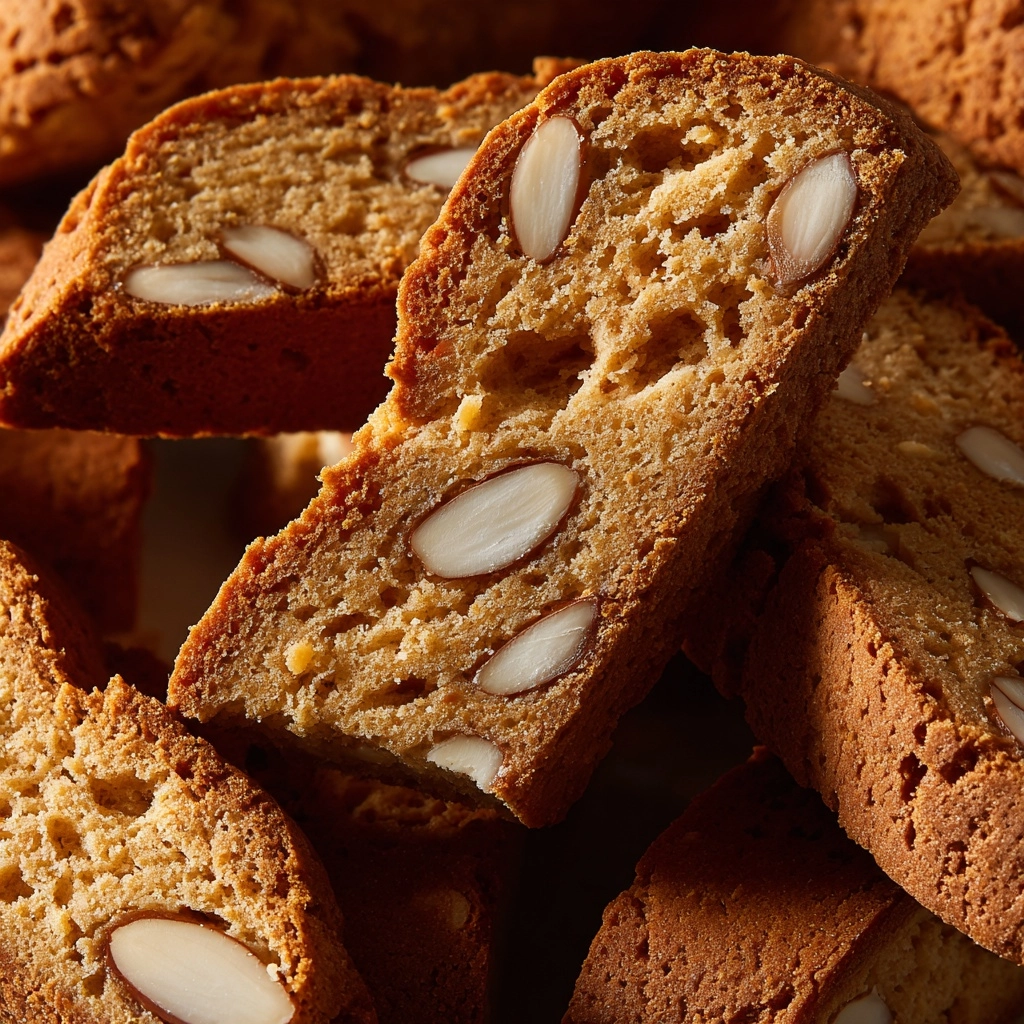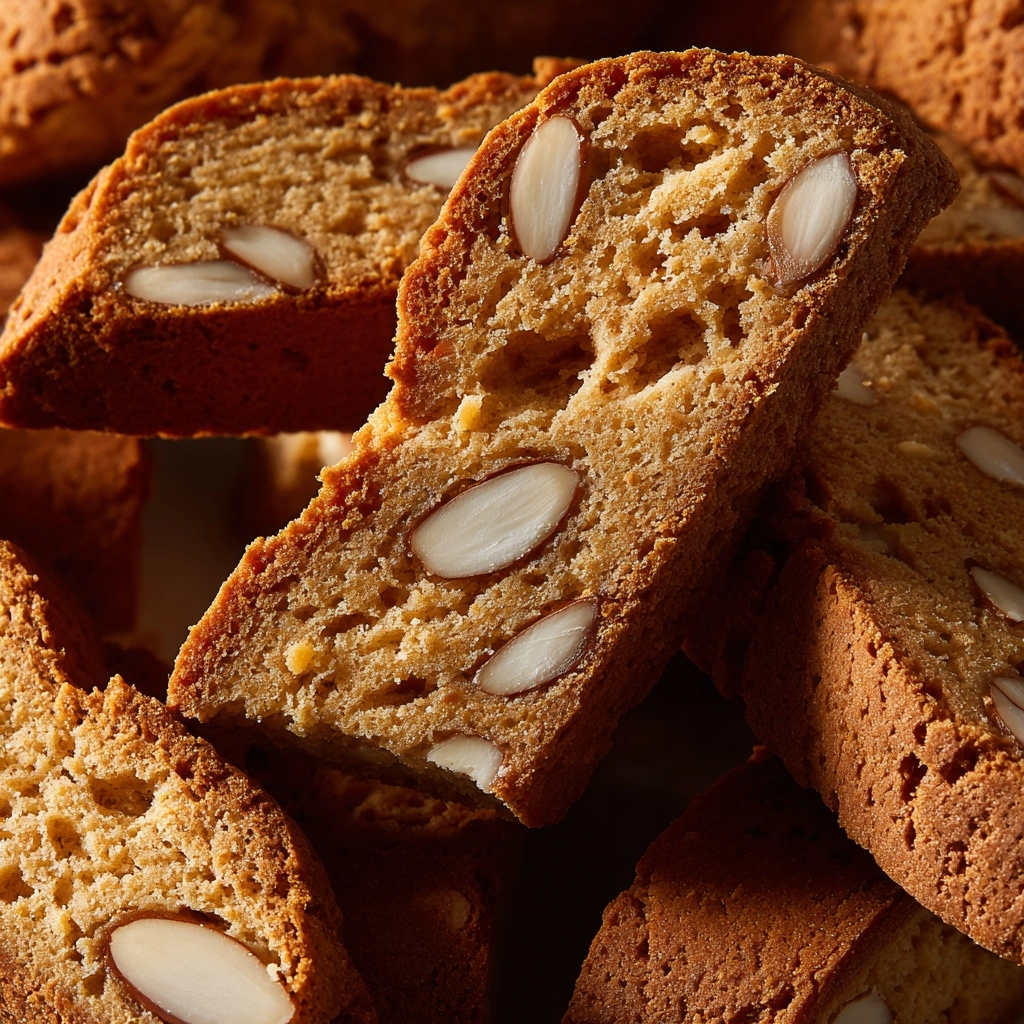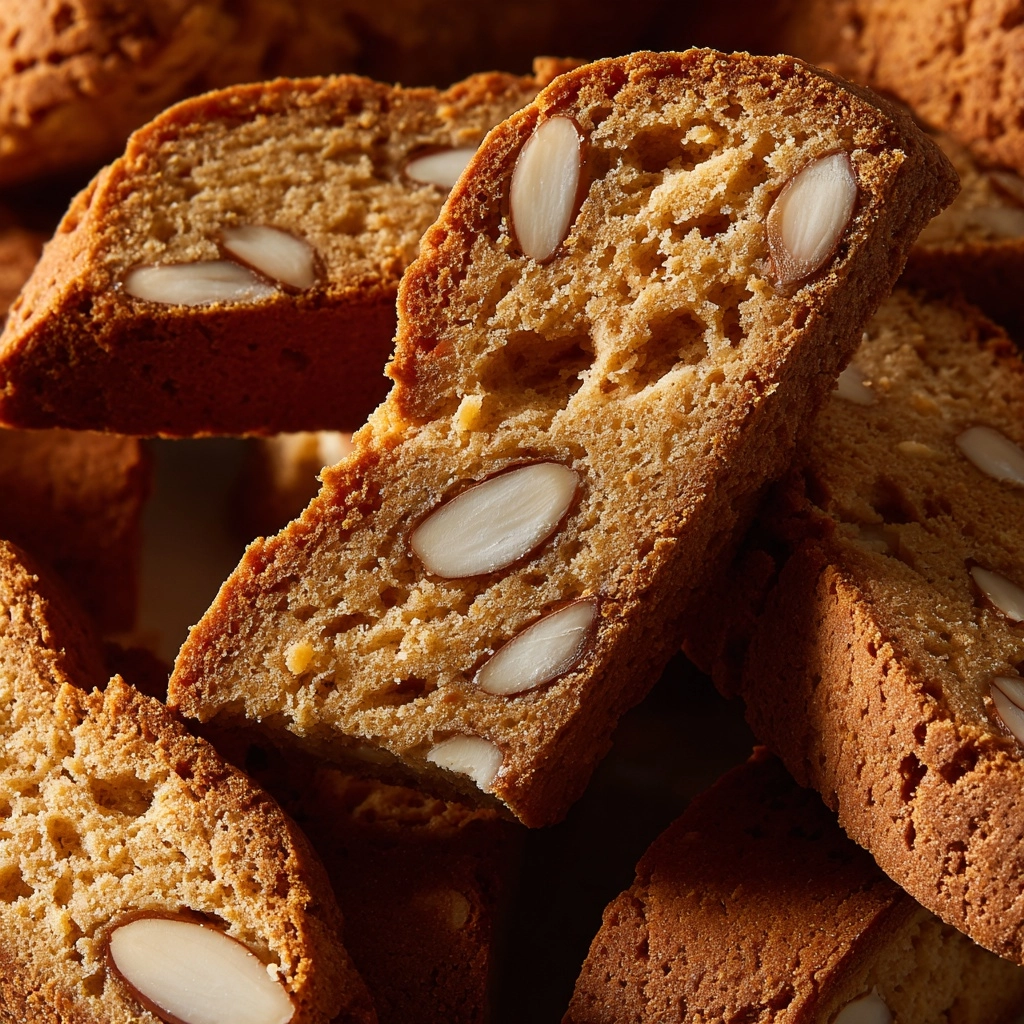If you’re searching for a classic treat that brings a little Italian magic to your kitchen, Italian Biscotti are exactly what you need. These twice-baked cookies have just the right crunch, a delicate sweetness, and that unmistakable roasted almond aroma. With simple ingredients yet deeply satisfying flavor, Italian Biscotti shine whether you dip them in your morning espresso, afternoon tea, or even something a bit cozier like Vin Santo. The golden slices look beautiful on any table, and the experience of baking them fills your home with warmth and happiness.

Ingredients You’ll Need
The joy of Italian Biscotti lies in the simplicity of its ingredients—each one making an important contribution to the cookie’s remarkable flavor and satisfying texture. Gather these essentials, because every component has a role: from the gentle sweetness and nutty notes to the classic crunch that defines biscotti bliss!
- All-purpose flour: The sturdy foundation of biscotti, giving the cookies their signature crisp texture and gentle crumb.
- Baking powder: Just a touch for a subtle lift, ensuring the biscotti logs bake up light before their second crisping.
- Salt: A tiny pinch brightens flavor and balances sweetness—never skip this!
- Sugar: Sweetness that supports the toasted almonds and makes the biscotti golden and inviting.
- Eggs: These bind everything together and provide that classic biscotti bite after the double bake.
- Vanilla extract: A cozy, warming background note that pairs perfectly with almonds.
- Almond extract: The secret to bringing that aromatic, irresistible Italian Biscotti flavor home.
- Whole almonds: Roasted almonds are non-negotiable for crunch and an authentically nutty taste in every bite.
How to Make Italian Biscotti
Step 1: Prepare Your Oven and Baking Sheet
Start by preheating your oven to 350°F (175°C), which is the sweet spot for getting Italian Biscotti perfectly golden—never burned. Line a baking sheet with parchment paper to prevent sticking, and to make it easier to clean up once your house smells like an Italian bakery!
Step 2: Mix the Dry Ingredients
In a large bowl, whisk together the flour, baking powder, and salt. This quick step ensures even distribution and keeps your biscotti’s texture light and crisp. A uniform mixture prevents any accidental pockets of bitterness or uneven leavening.
Step 3: Beat the Eggs and Sugar
In another bowl, beat the eggs and sugar together until the mixture looks pale and doubled in volume. This is where the biscotti get their lovely base of sweetness and structure. Take your time—when the eggs and sugar are thoroughly blended and a bit fluffy, it means extra-crisp results later.
Step 4: Add the Flavorings
Now stir in both the vanilla and almond extracts, which instantly transform the base into something that just shouts “Italian Biscotti is in the oven!” The aroma is incredible, and it really sets the stage for the entire baking process.
Step 5: Combine Wet and Dry Ingredients
Slowly add the dry ingredients to your egg and sugar mixture, stirring gently. Watch as a soft, sticky dough forms—don’t worry if it looks a bit shaggy, it comes together beautifully in the next step.
Step 6: Fold in the Almonds
With a gentle hand, fold in the whole almonds. You want them evenly distributed, so every slice of Italian Biscotti has that satisfying crunch. Whole nuts look gorgeous and give the best bite!
Step 7: Shape and First Bake
Divide the dough in half (it’s easiest with damp hands or a silicone spatula) and shape each portion into a log about 10 inches long. Arrange them on your baking sheet, leaving some room for spreading. Bake for 25–30 minutes, just until they’re softly golden and feel set when tapped.
Step 8: Cool and Slice
Remove the biscotti logs and let them cool for 10 minutes—just enough time for them to firm up but not so much that they become brittle when cut. With a serrated knife, slice the logs diagonally into elegant 1/2-inch slices. Try to keep your pressure gentle for neat slices that showcase the almond-studded interior.
Step 9: Second Bake for the Crunch
Arrange the slices cut-side down on the baking sheet and return them to the oven. Bake for another 10–12 minutes per side until they’re dry and satisfyingly crisp. This double bake is what gives Italian Biscotti that famous firmness, perfect for dunking!
How to Serve Italian Biscotti

Garnishes
Don’t underestimate the power of a dusting of powdered sugar or a drizzle of melted dark chocolate across the cooled biscotti. For a festive touch, try a sprinkle of orange zest or dipping one end of each cookie in chocolate for sparkle and shine.
Side Dishes
Serve Italian Biscotti alongside tiny cups of strong espresso, a chilled glass of Vin Santo, or even herbal tea for a lighter pairing. A scoop of vanilla bean gelato can also make these cookies the highlight of a special dessert platter.
Creative Ways to Present
Pile your Italian Biscotti in a rustic basket lined with a linen napkin, stack them in a pretty glass jar for gifting, or arrange them upright in a tall mug for an eye-catching centerpiece. They’re just as lovely at a holiday gathering as they are for a solo indulgence on a quiet afternoon.
Make Ahead and Storage
Storing Leftovers
Keep leftover Italian Biscotti crisp by storing them in an airtight container at room temperature. They’ll stay fresh for up to two weeks, so you can enjoy a little taste of Italy whenever the craving strikes.
Freezing
If you want to save some for later (or double the batch!), let biscotti cool completely, then seal them in a freezer-safe bag or container. They’ll freeze beautifully for up to three months—just be sure to thaw them uncovered at room temperature to prevent any sogginess.
Reheating
To revive Italian Biscotti’s crisp texture, pop them in a preheated 300°F (150°C) oven for 5–7 minutes straight from the freezer. Let them cool before serving—a quick trick that makes even month-old biscotti taste freshly baked!
FAQs
What makes Italian Biscotti different from regular cookies?
Biscotti are uniquely twice-baked, which gives them their signature crunchy texture and the durability to be dipped in hot drinks without falling apart. Regular cookies are only baked once and typically remain soft or chewy.
Can I substitute other nuts for almonds?
Absolutely! While whole almonds are traditional in Italian Biscotti, you can try hazelnuts, pistachios, or even chopped dried fruit for a fun twist. Just keep the measurements the same.
Why did my biscotti turn out too hard?
Overbaking during the second bake can lead to biscotti that’s nearly tooth-breaking. Stick to the recommended time and let them finish crisping up as they cool; they should be crunchy, not rock-solid.
Can I make these gluten-free?
Yes, replace the all-purpose flour with a high-quality 1:1 gluten-free flour blend. The results will be slightly different in texture, but you’ll still have delicious, dunkable Italian Biscotti.
How do I get perfect biscotti slices without crumbling?
Use a sharp, serrated knife and let the logs cool for 10 minutes—no longer—before slicing. Cut gently in a sawing motion, which helps avoid breaking or crumbling the cookies.
Final Thoughts
There’s something truly joyful about making and sharing Italian Biscotti, whether you’re gifting them to friends or stealing one with your morning coffee. I hope you’ll give this timeless recipe a try, and that these crisp, fragrant biscotti bring a little bit of Italian sunshine to your table!


https://shorturl.fm/R3gqT
https://shorturl.fm/wHFk6